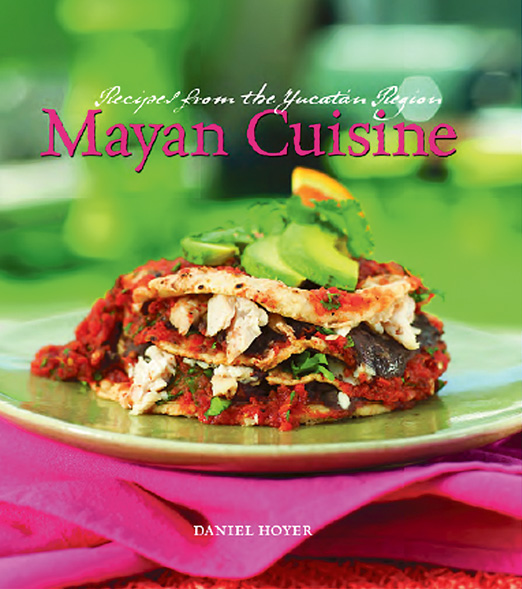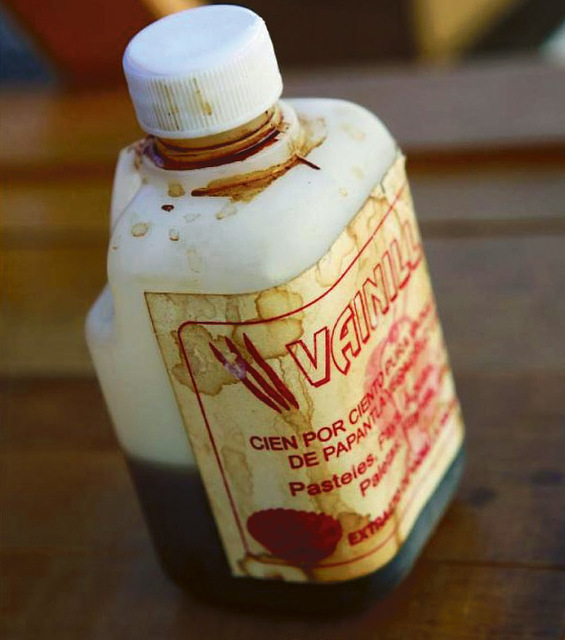Region to region, state to state, Mexican food runs the gamut from simple beans and rice to complex moles and seasoning pastes. The variety and scope of Mexican cuisine is huge. And it can look very different from what we tend to call Mexican food here in New Mexico.Daniel Hoyer, former sous chef of Santa Fe’s Coyote Café, goes deep into Mexico’s cuisine by delivering a tome on all things edibly Mayan. Mayan Cuisine: Recipes from the Yucatan Region hits the ground running with brilliantly colored photos and equally vibrant descriptions of this provocative cuisine. From the first chapter ( Recados , seasoning pastes that are the building blocks of Mayan cuisine) to the finale (Beverages), Hoyer illustrates the diversity and mystique of a people and cuisine rarely encountered this side of the border.After poring over every word and picture, I wondered if I—a stateside cook with a respectable amount of skill—could reproduce the gorgeous and sensual dishes he presented. Though I rarely run into a recipe I can’t master, the few that trip me up have been Mexican of some sort. Something about my strict, legalistic approach to cooking doesn’t translate.I consulted a friend who travels extensively through Mexico and gives orgasmic recountings of Mayan food. He gave the OK to Hoyer’s book. But he also warned that I had no idea of what I was in for, muttering that only Mayans in the Yucatan were able to cook this food. Whatever, I thought. I’m awesome. I’m going to make this cookbook my bitch. I selected 11 recipes as the menu for an upcoming party. I chose two salsas, tortilla chips, beans and rice, stuffed plantains, chicken in a black mole-type sauce, an almond torte and tepache , a fermented pineapple drink. The salsas—salsa verde and sikil-pak —I farmed out to Lisa, the wife of my well-traveled and less-than-supportive friend. The rest I would attempt on my own.The first problem I ran into was acquiring the ingredients. Secos de Yucatan chiles simply can’t be obtained here. Fresh epazote also eluded me. I followed Hoyer’s advice for acceptable substitutions and hoped for the best.The tortilla chips were fantastic. Fried in lard and sprinkled with lime and salt (I used a black sea salt for visual appeal), the chips were loaded with flavor and slightly chewy in spots. Hoyer’s salsas also impressed, flavor-wise. But texture was an issue—the salsa verde thickened to the point of being gelatinous. Yellow rice and black beans were powerful, full of spice and seasoning that definitely set them apart from their New Mexican counterparts. I ended up scrapping the stuffed plantains. I couldn’t get the mashed plantains to roll out into tortillas, likely the result of underripe fruit. But its filling—a deliciously aromatic picadillo of meat, spices and raisins—made do as a topping for tortilla chips.And then there’s the damn black mole. Without the correct chiles, and perhaps my inability to speak Mayan, the sauce just wasn’t black. The complicated recipe required making two recado pastes and hand-grinding a ridiculous number of spices. The recado Colorado turned out beautifully, but the chilmole o recado de rellenos negro was decidedly dark red, not negro . The sauce the spice pastes went into wasn’t negro, either, and it never thickened up. But it tasted good. The chicken it adorned couldn’t have been moister or more tender.The almond torte, made with ground almonds and fresh eggs, was perfection. Rich and dense, the almonds brought a depth of flavor that put Duncan Hines to shame. I killed the tepache beverage . That one was entirely my fault. French cooking is my strength, so I can’t help but strain sauces and liquids until they reach transparency. Bad idea when it comes to a drink that’s really no more than hooch. My insistence on straining every last speck from the fermented juice removed all its carbonation, resulting in a flat juice that failed to impress.Regardless of my inability to re-create Hoyer’s recipes, the book is still amazing. Well-researched and impeccably compiled, it’s at least a fascinating read. But a word to the wise: These recipes are a lot of work and skill only goes so far. Without the indigenous ingredients Mayan cuisine is built upon, be prepared to end up with dishes that only slightly resemble the gorgeous pictures that accompany the recipes.
Mayan Cuisine: Recipes from the Yucatan Region by Daniel Hoyer. Published by Gibbs Smith, 2008. Hardcover, $34.95.











